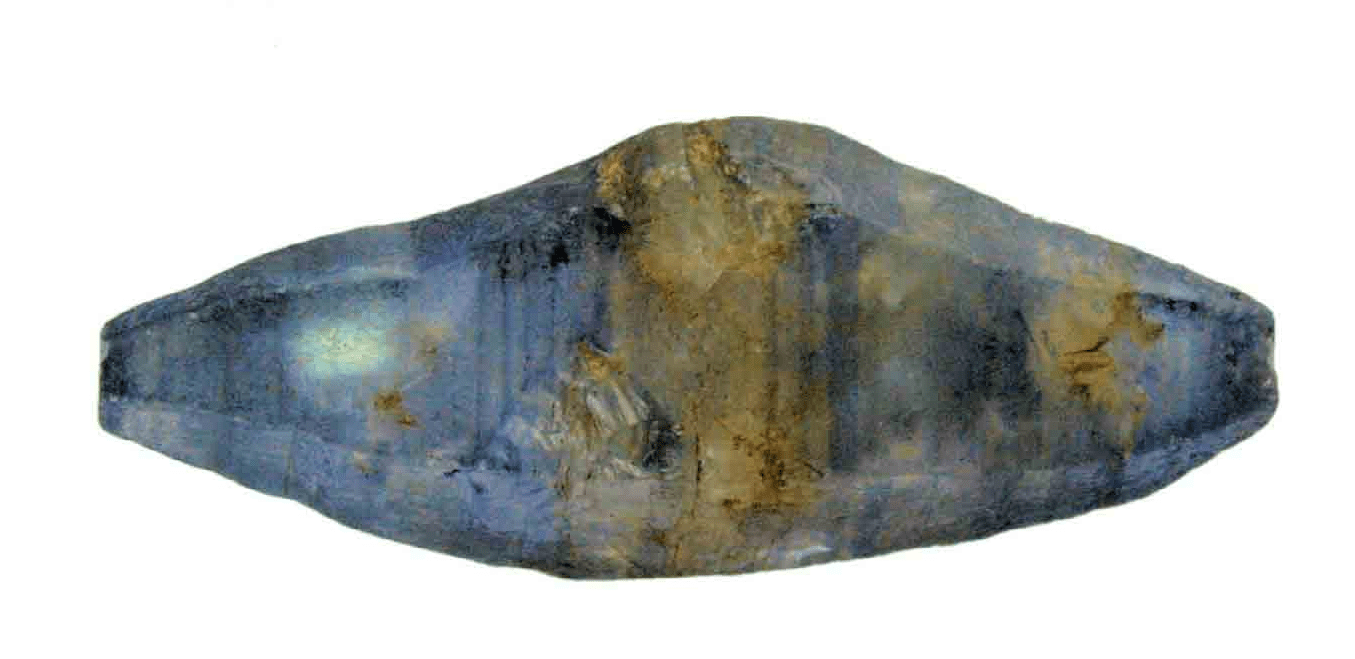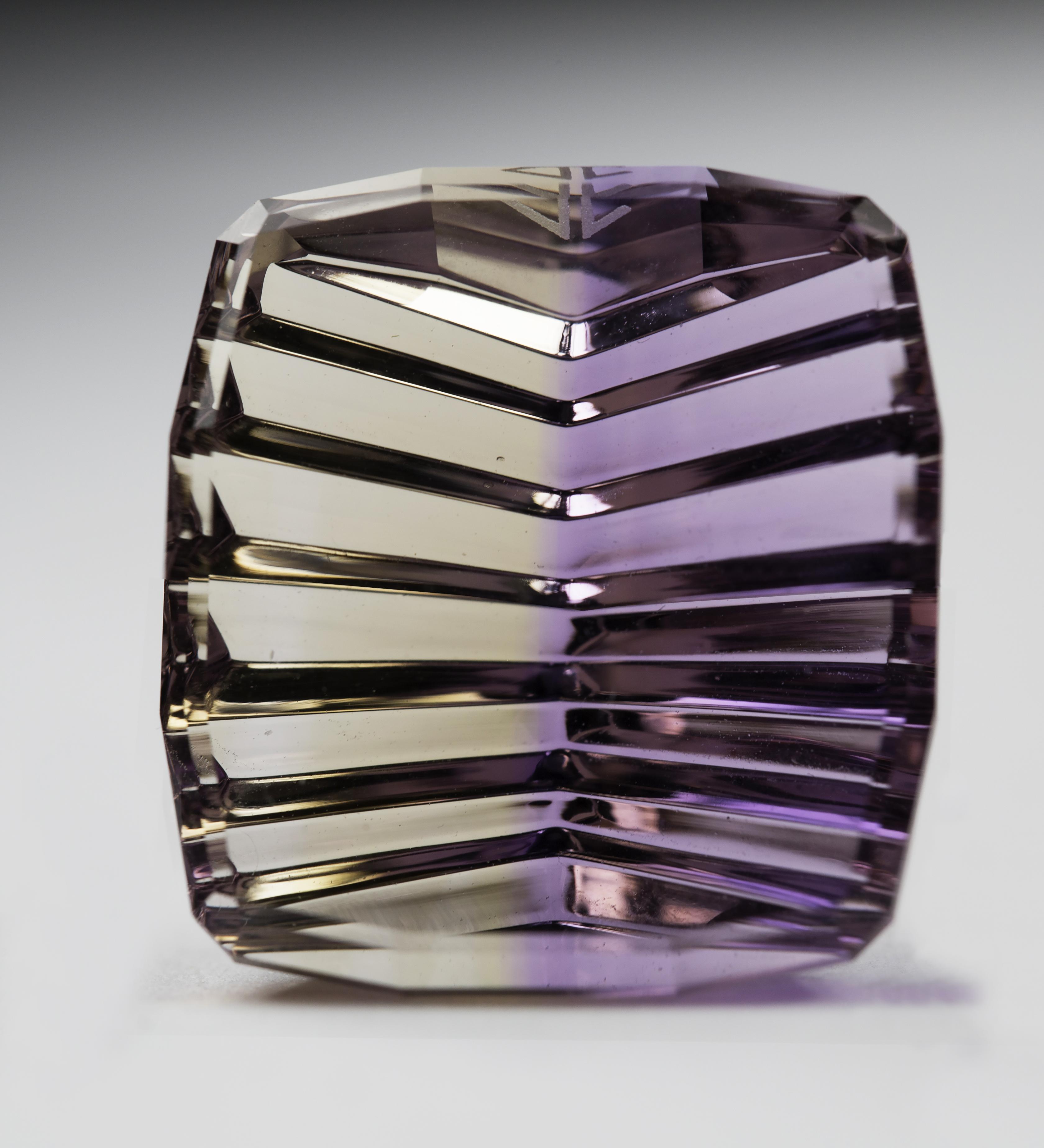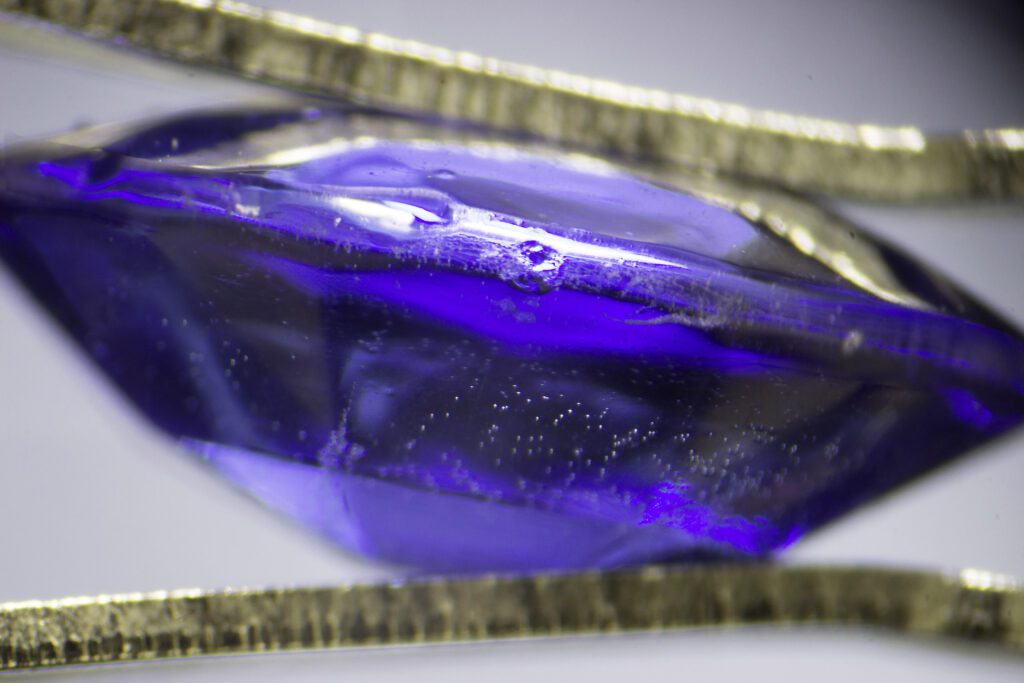Many of us marvel at the feat of nature that is the multi-coloured gemstone. Here, Gem-A Gemmology Tutor Lily Faber FGA DGA EG takes us through the basics of three popular multi-coloured gemstones and explains how they can be identified.
Multi-coloured gemstones are a fantastically colourful type of gem that display two or more colours when they are in rough crystal form or fashioned for a piece of jewellery. Certain varieties of multi-coloured gemstones are very popular in the market as they can make vibrant and dazzling jewels. Some particularly desirable gems that fall into this category include watermelon tourmaline, bi-colour sapphire and ametrine.
Watermelon Tourmaline
Watermelon tourmaline is named as such because of its distinctive colouration, which displays green, pink and colourless zones in two different patterns depending on the way a crystal grows and is subsequently fashioned.
The colour zones can form in concentric rings from the centre of the stone outward with a pink core and outer green band. This pattern looks surprisingly similar to a watermelon, hence the name, and is best displayed when the crystal is cut in cross-section slices. Watermelon tourmaline can also sometimes be seen cut in the shapes of butterfly wings or leaves.


A ‘slice’ of watermelon tourmaline. Image: Gem-A.
The other possible pattern will display banded colour zones down the length of the crystal that are either distinctly divided or blending into one another. This pattern is best shown when the gem is fashioned into a square or rectangular step-cut with the table facet parallel to the length of the crystal so that the stone shows different colours at the two ends.
Tourmaline is a true gem of all colours and can come in any hue under the sun. In addition to watermelon tourmaline, you can also buy parti-coloured tourmalines which exhibit any number of two or more colours. Some of the finest specimens of watermelon and parti-coloured tourmaline are found in Brazil.
Bi-Colour Sapphire
Bi-colour or parti-colour sapphires will show two to three colours including, but not limited to, blue, yellow and green. These stones will be cut in such a way to show off the zones of colour that can look like ethereal patches or sit in distinct zones that are angular (sometimes hexagonal), straight or stripy.


A bi-colour blue-yellow sapphire. Image: Gem-A.
Read more: Understanding the Value of Sapphires
Bi-colour sapphires can be heat-treated to enhance just one colour, typically blue, but because they are growing in popularity, more and more specimens on the market are being left in their naturally grown states. Many of the bi-colour sapphires on the market are from Madagascar, Australia and Montana, USA.
Ametrine
Ametrine is a variety of quartz that is a combination of two colours: the purple of amethyst and the yellowish-orange of citrine. The colour zones occur in straight or geometric zones that can either form in up to six triangular sections that emanate from a central point, or simply divide the stone into two or more zones of colour. The areas of colour can be crisply or softly defined.


A Bolivian ametrine cut by John Dyer & Co. Image: Gem-A.
Ametrine occurs naturally and the pattern develops during growth. Ametrine-like colour zoning can also be induced in lab-grown amethyst by heating part of the stone to induce a yellow colour. In such cases, the border between the purple and yellow zones is often sharp. The main commercial source of natural material is Bolivia.
Multi-Coloured Gems vs. Colour-Change Gems
Gems that display two or more colours when viewed should not be confused with gemstones that display colour-change. Multi-coloured gems show those same colours regardless of light sources, while colour-change gems display different colours when viewed in differing light sources.
A prime example of a colour-change gemstone is alexandrite, a variety of chrysoberyl. It looks green in daylight and red in incandescent light, giving it the old adage, ’emerald by day, ruby by night’ – the colour changes drastically before your very eyes with the flick of a light switch! Multi-coloured gems may show colour-change but this is not a distinguishing feature of these gemstones.
Read more: What Makes the Alexandrite Colour-Change Effect so Special?
Multi-coloured gemstones are one of the great marvels of gemmology and are loved the world over for their unique and eye-catching appearance. While some varieties of multi-tonal gemstones can command a premium, like watermelon tourmaline, others such as ametrine tend to be relatively affordable and, although rare, appear quite often in jewellery.
Are you passionate about coloured gemstones and want to expand your knowledge? Have a look at our Gemmology Foundation and Gemmology Diploma courses.
Interested in learning the basics of gemmology? Why not try one of our introduction Workshops or Short Courses.
Cover image: A bi-colour tourmaline crystal showing banded colour zones. Image: Pat Daly.



